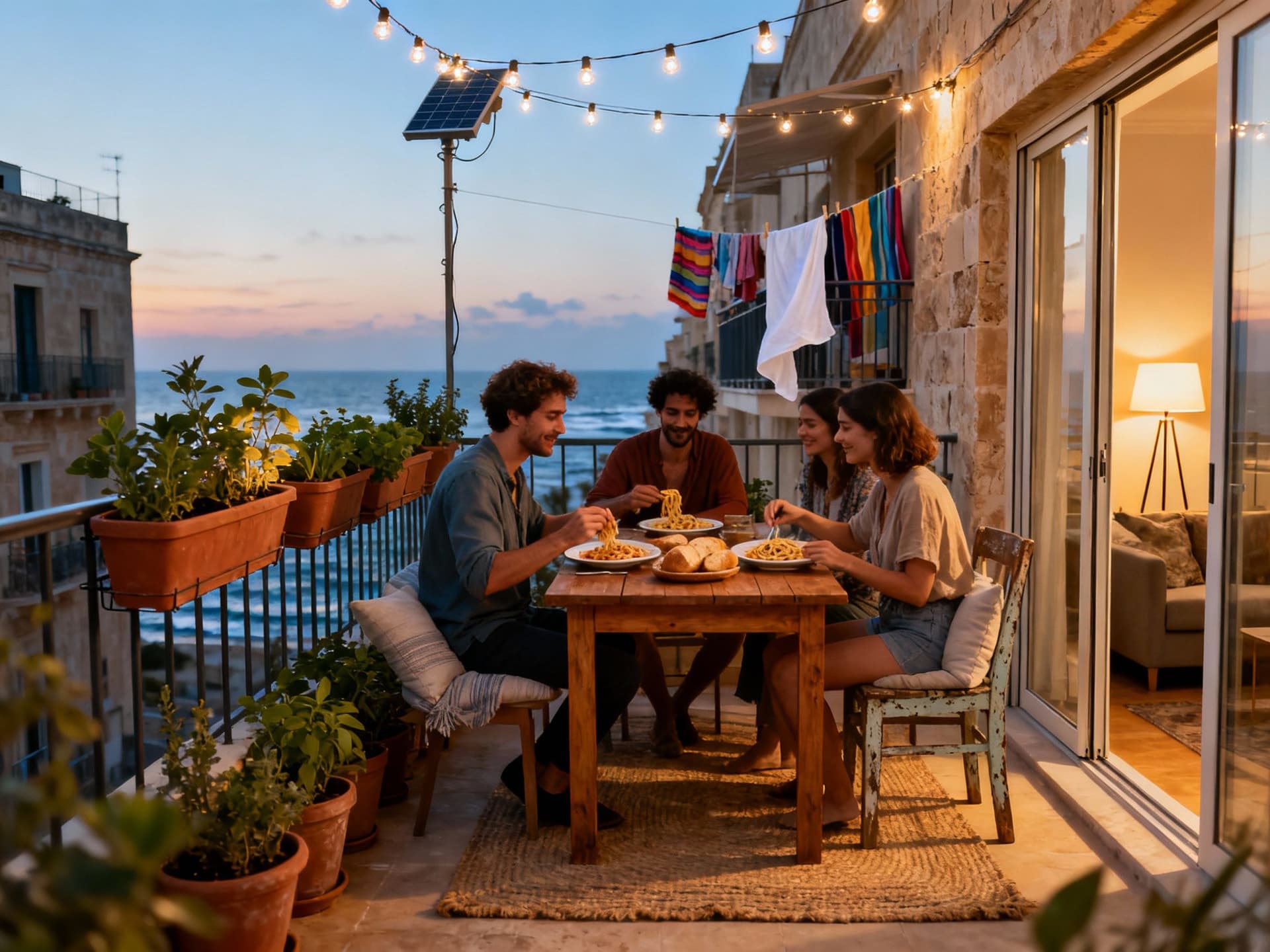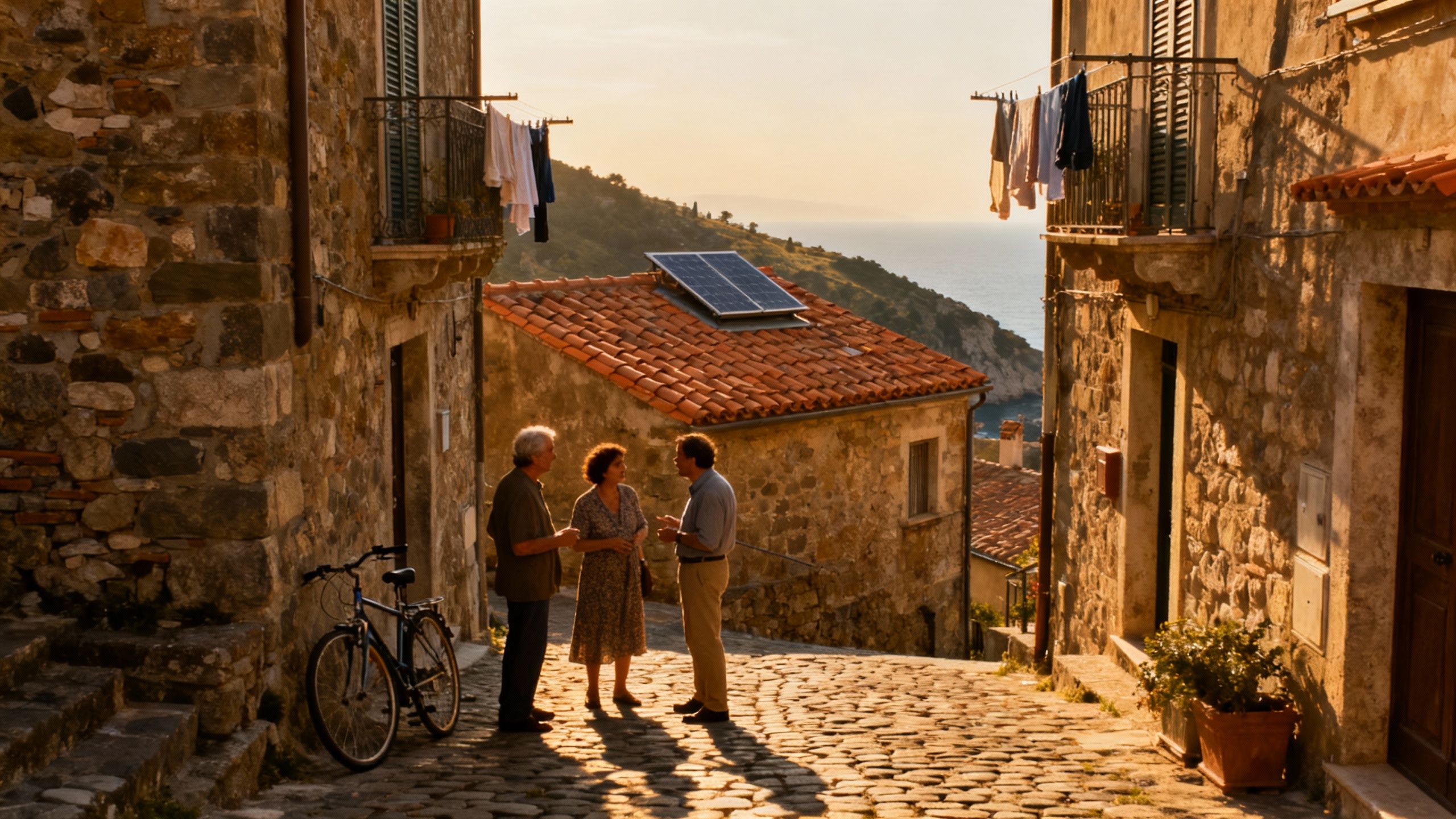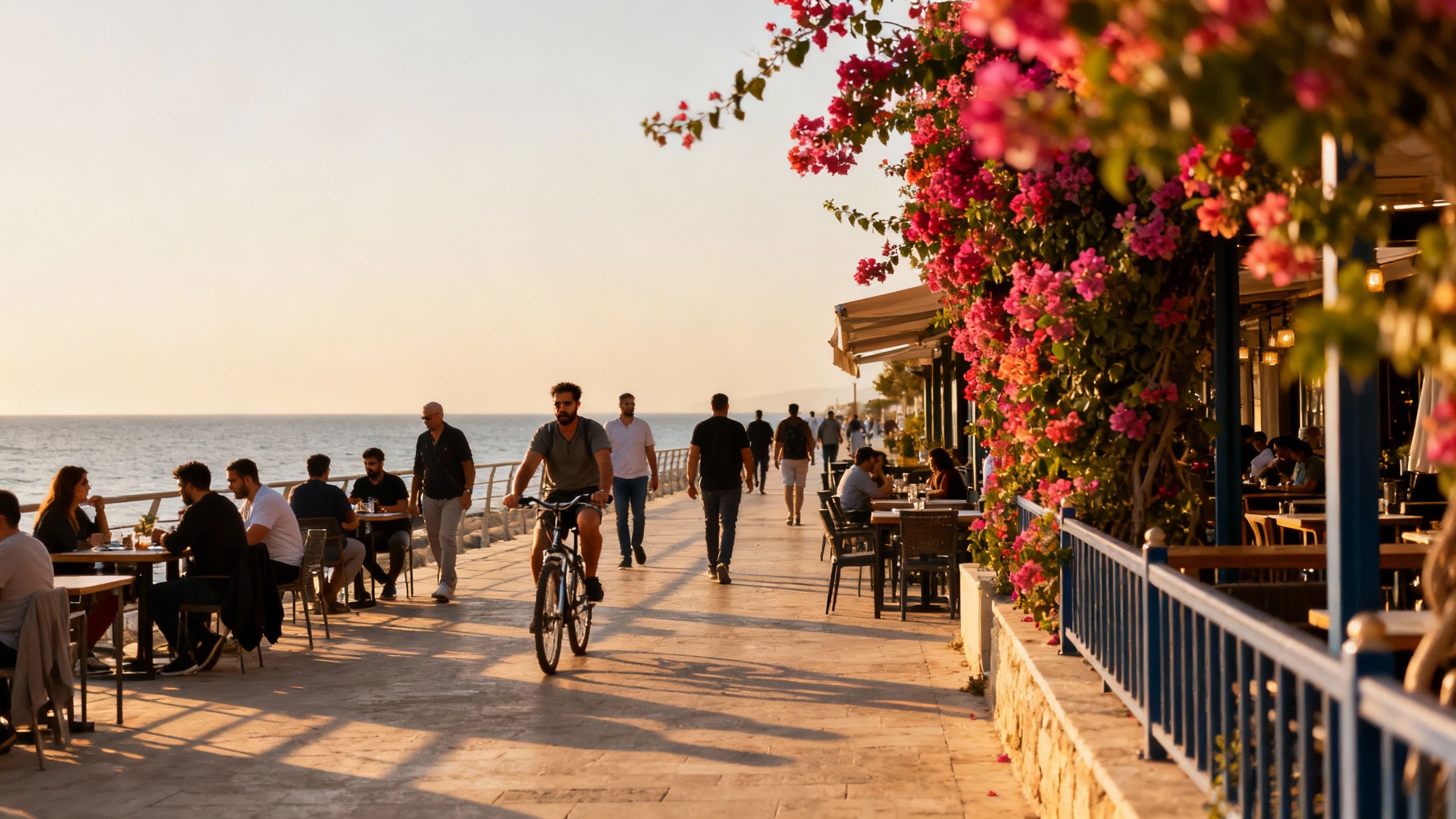Malta’s Green Edge: Renewable Reality Behind the Shoreline
Malta blends historic limestone charm with growing green infrastructure—learn lifestyle truths, neighborhood rhythms, and practical steps to buy sustainably on the islands.
Imagine sipping espresso in a sun-bright Valletta square as photovoltaic panels flank a nearby rooftop garden—Malta feels small, but the green currents beneath its limestone streets are surprisingly powerful. For international buyers drawn to Mediterranean light and a slower rhythm, Malta’s compact scale hides a serious conversation about renewable energy, coastal biodiversity and sustainable retrofit opportunities. This piece pulls the postcard apart: the lifestyle you see—harbours, festas, terrace dinners—meets the practical reality of a dense island investing in green infrastructure and rising property value pressures. Read on for the sensory scenes that make you want to live here and the research-backed realities that will shape the offer you make.
Living Maltese Days: Light, Limestone & Neighbourhood Rhythm

Malta’s daily life moves in tidal rhythms: fishermen unloading at Marsaxlokk at dawn, office workers crossing Sliema’s Tower Road with coffee in hand, and families drifting to sandy bays at Mellieħa come evening. The air smells faintly of salt and baking bread; you hear church bells and the low hum of scooters weaving around baroque facades. For those who prize walkability, small-scale community life and a year-round mild climate, Malta compresses pleasures into short distances—every errand feels like a stroll. That tightness is the island’s charm and the reason sustainability choices—solar panels, efficient water use, retrofit insulation—have outsized impact on daily comfort and running costs.
Neighbourhood spotlight: Valletta, Sliema & St Julian’s
Valletta’s narrow streets feel historic and intimate—stone thresholds, tiny balconies, and cafés like Rampila where you linger over stewed rabbit or ftira. Cross the ferry to Sliema and you find a promenade lined with afternoon cafés and quiet courtyards perfect for rooftop gardens. St Julian’s, particularly around Spinola Bay, is livelier after dark with restaurants and co‑working nooks; its apartment blocks often come with small terraces ideal for container gardens and solar-ready roofs. Each area trades different luxuries: Valletta gives history and scale, Sliema offers seaside strolls, and St Julian’s provides social energy and convenient services.
Food, markets and the sea: where you’ll do life
Weekends in Malta often begin at local markets—fish fresh from Marsaxlokk, seasonal greens, and sun-warmed olives. Dinner is communal: long tables on terraces, grilled fish, and austere local wine. The island’s small farms and urban growers are rediscovering heirloom varieties, making a city-anchored farm-to-table life plausible even in dense neighborhoods. These culinary rhythms shape what buyers want: outdoor kitchens, sunny terraces, and storage for market finds—features that relate directly to property choices and retrofit priorities.
- Lifestyle highlights to seek in a Maltese property: Valletta’s merchant streets and rooftop views; Sliema’s promenade and café culture; Marsaxlokk’s market mornings; Mellieħa’s sandy coves and long walks; Ta’ Xbiex marinas and community harbourside gardens.
Making the Move: Practical Considerations (with a Green Lens)

Dreams meet paperwork quickly on a small island. Malta’s property market remains active—transaction volumes and prices have shown resilience—so timing, sustainability upgrades and neighborhood choice affect both lifestyle and long-term value. Data from recent market surveys and central bank indicators show steady price growth in many segments and rising interest in higher-value homes, which means green improvements (solar-ready roofs, water-saving systems) can meaningfully differentiate offers. Work with agents who read both the lifestyle wish-list and the P&L: local knowledge shortens the path from ‘I love it’ to a secure purchase.
Property styles & how they shape life
Apartments and penthouses dominate coastal towns—light-filled, compact and often with terraces that become outdoor rooms. Houses of character and townhouses offer thick limestone walls, cool interiors and the chance for sympathetic retrofits like internal insulation or discreet heat pumps. Newer constructions tend to advertise energy-efficient glazing and space for PV arrays; in practical terms, think about how each property type supports year-round comfort, rainwater harvesting and low-energy living. Match the building’s bones to your lifestyle: a townhouse for slow, layered renovation or a modern apartment for plug-and-play low-impact living.
Working with local experts who care about green outcomes
A Maltese agent who knows Festa calendars, permit quirks, and which roofs are structurally sound for panels is worth their weight in screened stone. Look for agencies that can arrange technical surveys focused on thermal performance and solar potential, and that maintain relationships with local craftsmen—stonemasons, carpenters, and eco-installers. Ask for recent case studies showing roof-mounted PVs or low-energy retrofits and demand energy-readiness reports; this filters agents who treat sustainability as decoration from those who treat it as deliverable. Good local advice saves time, money and disappointment.
- Steps to blend lifestyle wants with green due diligence: 1) shortlist neighborhoods by daily rhythms (markets, schools, commute), 2) commission an energy and roof-structure survey, 3) check planning constraints for retrofit or rooftop panels, 4) ask the agent for recent utility bills and local permit timelines, 5) build a renovation contingency into your offer.
Insider Knowledge: What Expats Wish They’d Known
Expat buyers often arrive enchanted and then discover the pragmatic contours: the island’s density makes quiet sites precious, festivals can close streets for weekends, and building permits for heritage areas can be slow. Many wish they’d prioritized outdoor living—balconies and terraces—because the Mediterranean climate rewards them. Others learned the hard way that advertised ‘sea views’ vary by street level and angle; ask an agent to visit at different times of day. Practically, getting local utility histories, understanding HOA-like management for shared buildings, and securing a trusted surveyor are the moves that protect both lifestyle and wallet.
Language, customs and daily integration
English is an official language in Malta, which eases initial integration, but the Maltese language, festas, and neighbourly codes shape social life. Expect friendly curiosity—neighbors who share produce from their terrace—and an invitation culture tied to family and church calendars. Join community groups, small-language classes, or volunteer at local markets to build ties quickly; these simple steps open doors to craftsmen, informal lead sources for local renovations and a deeper sense of belonging that makes a house truly home.
Long-term lifestyle and sustainability trade-offs
Over the long term, buyers who invest in energy upgrades and water efficiency often enjoy better comfort and stronger resale interest in Malta’s compact market. Recent market reports note steady price increases and a growing appetite for higher-value homes, which means environmentally‑minded improvements can be value-accretive. Be pragmatic: prioritize interventions with quick wins—solar-ready wiring, shading, and efficient hot water systems—before larger overhauls. These choices deliver daily pleasures and protect against future regulatory shifts toward greener building standards.
- Red flags and quick checks before you buy in Malta: unclear roof ownership for solar installations; missing structural surveys in older townhouses; absence of recent utility bills; unclear access arrangements for terraces; and overly optimistic rental-yield promises.
Malta is tactile: limestone textures, sea-salted air and the slow, convivial tempo of Mediterranean life. If you value community, walkability and sun-warmed evenings, the island rewards you daily. Pair that dream with thorough, green-minded due diligence and you’ll buy not just a house but a home that sits lightly on the landscape. Start by visiting neighborhoods at different times, ask agents for recent retrofit case studies, and commission energy and structural surveys before you make an offer—then let a local, sustainability-aware agent help you steward the property into its next life.
Swedish advisor who left Stockholm for the Costa Brava in 2019. Specializes in sustainable, sea‑view homes for Scandinavian buyers and green finance insights.


